Introduction
Making homemade French toast at home is a delightful way to start your day. With a few more likely available ingredients, you can create a dish that’s both comforting and delicious. The best part? It’s easy to perfect. A few expert tips can take your French toast from good to great.
This classic breakfast dish is incredibly versatile. You can keep authentic and stick with the traditional recipe, or get creative with toppings and fillings. Whether you prefer your French toast plain and simple or loaded with fruit, syrup, and whipped cream, there’s a version for everyone.
With the right ingredients and technique, you’ll master French toast like a pro. The key is balancing flavors and textures to create the perfect breakfast treat. Let’s dive into how to make the best homemade French toast from start to finish!
What Makes the Best Homemade French Toast?
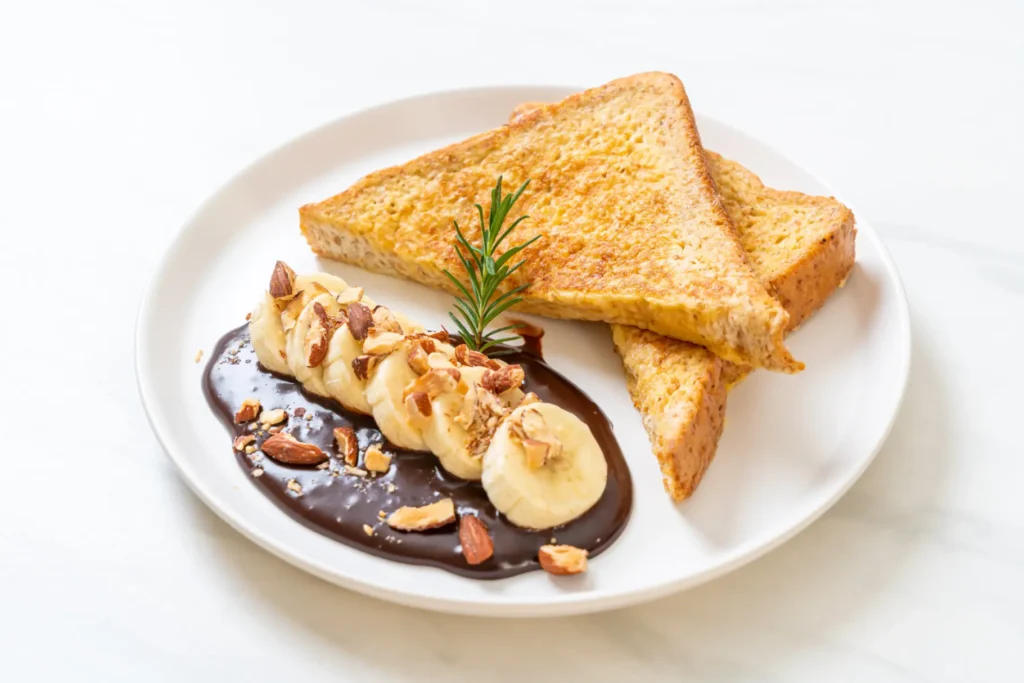
The Importance of Using Thick, Egg-Rich Bread
To make the best homemade French toast, start with thick, egg-rich bread. Thick slices soak up the batter perfectly, giving you a fluffy interior and crisp outside. Brioche, challah, or French bread are great choices.
Why Fresh Ingredients Matter
Fresh eggs, milk, and vanilla extract make a big difference. Use high-quality eggs for a rich flavor. Fresh milk creates a creamy batter. Pure vanilla extract adds sweetness and depth to your French toast.
Tips for Achieving That Perfect Golden Crisp
Achieving a golden crisp requires the right cooking technique. Cook over medium heat to ensure the toast gets crispy without burning. Flip the toast only when the edges are golden, and avoid overcrowding the pan.
How to Balance Flavor with a Pinch of Cinnamon and Sugar
A pinch of cinnamon and sugar balances the flavor of your French toast. Cinnamon adds warmth, while sugar gives it that perfect sweetness. Don’t add too much of it—just a light dusting will make all the difference you are looking for.
The Role of Butter and How It Enhances Texture
Butter is key to creating a crispy and golden texture. Use it generously in the pan, but don’t let it burn. The butter gives French toast a rich, delicious flavor and helps achieve that perfect crisp.
By paying attention to these details, you’ll make homemade French toast that’s crispy, flavorful, and absolutely irresistible.
Easy Step-by-Step French Toast Recipe
Prepping the Ingredients: Choosing the Right Bread
Start with thick, egg-rich bread like brioche or challah. The thicker the slices, the better they soak up the batter. Fresh bread gives your French toast the best texture.
Mixing the Perfect Batter for Soft and Fluffy French Toast
Whisk together eggs, milk, vanilla extract, and a pinch of cinnamon. The right ratio of eggs to milk creates a soft and fluffy interior. Don’t forget a pinch of salt to lie all the flavors together.
The Best Way to Cook French Toast for a Crispy Exterior and Soft Interior
To achieve a crispy exterior and soft interior, preheat a skillet or griddle over medium heat. Melt a small amount of butter in the pan before adding the bread. Cook each slice for about 2-3 minutes per side, until both sides are golden and crispy.
How to Serve It Hot with Your Favorite Toppings
Serve your French toast hot off the skillet. Top it with syrup, fresh fruit, whipped cream, or a sprinkle of powdered sugar. Customize it to your taste!
Making the Most of Leftovers (If Any)
If you have leftover French toast, store it a container to keep it fresh. When you’re ready to eat, reheat it in the toaster for a crispy texture or in the oven at 350°F (175°C) for 5-10 minutes to warm it without drying it out. Leftover French toast makes a quick and tasty breakfast, whether you enjoy it plain or with your favorite toppings!
This step-by-step guide ensures your French toast turns out perfect every time. Enjoy a homemade breakfast that’s both easy and delicious!
Expert Tips for Perfect French Toast
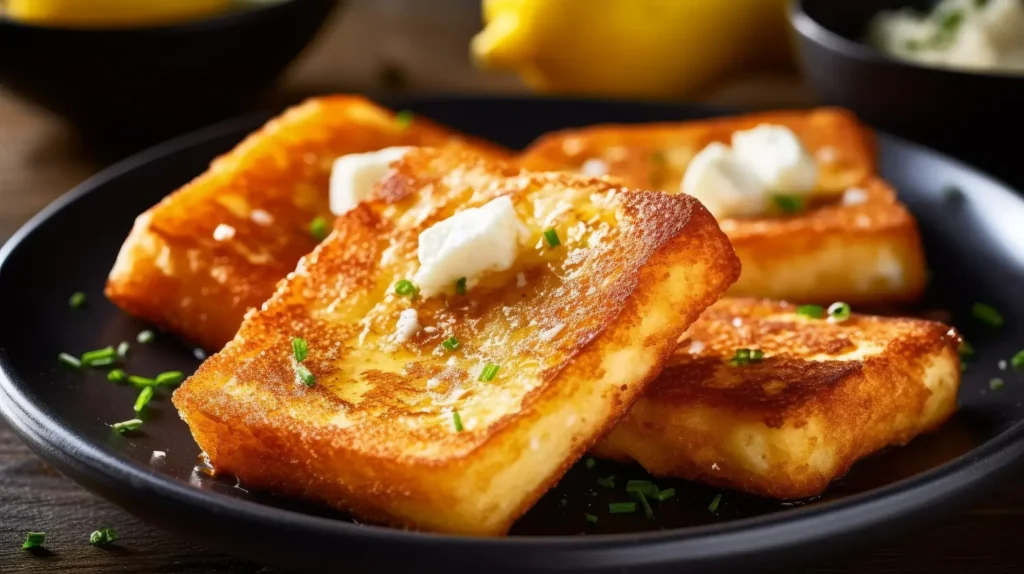
How to Achieve a Perfectly Golden Crust Every Time
To get a golden crust, cook over medium heat. Don’t start cooking until the pan is sufficiently hot. Flip the slices when the edges turn golden and crispy. This ensures both sides are evenly browned.
Using a Griddle or Skillet for Even Cooking
A griddle or skillet is ideal for French toast. It provides even heat, making sure your toast cooks consistently. If you don’t have a griddle, a non-stick skillet works well too.
The Secret to Fluffier French Toast: The Right Egg-to-Milk Ratio
For fluffier French toast, use a 2:1 ratio of eggs to milk. This creates a rich batter that coats the bread perfectly. The right amount of egg helps the toast rise and stay soft inside.
How to Keep French Toast Warm If Making in Batches
If you’re making French toast in batches, keep it warm by placing it in a preheated oven (around 200°F). Lay the toast on a baking sheet and cover it lightly using foil to prevent it from drying out.
Alternative Bread Options for Unique Textures and Flavors
Experiment with different breads for unique textures. Try using sourdough, rye, or whole-grain bread for a twist. Each bread type brings its own flavor and texture to your French toast.
These expert tips help you create French toast that’s perfectly golden, soft, and full of flavor every time. Enjoy!
Creative Variations of French Toast to Try
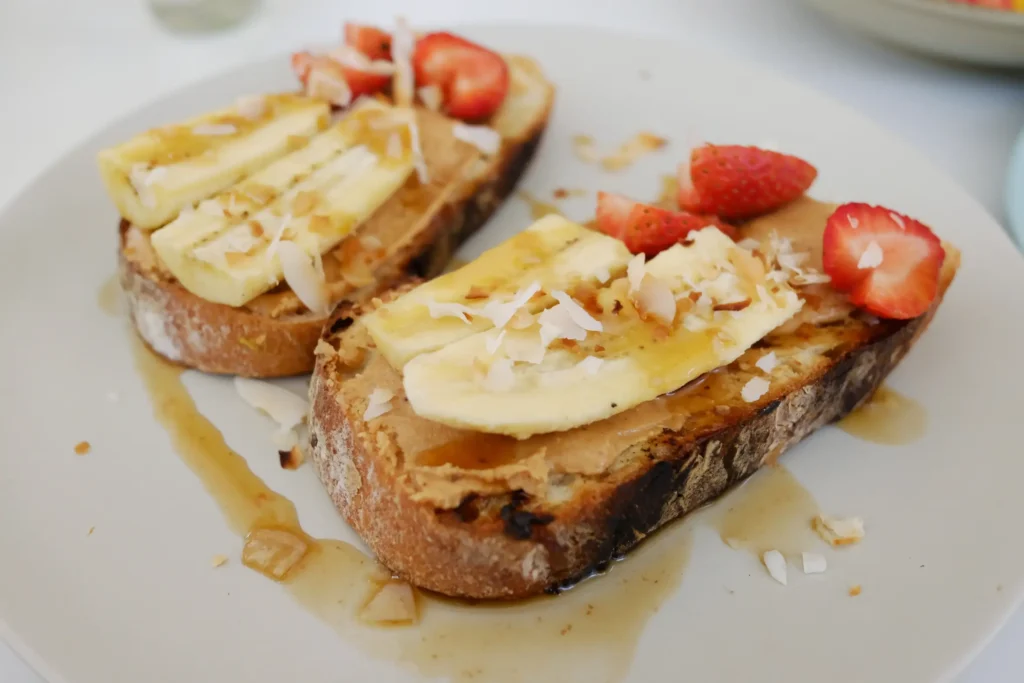
Sweet Options: Adding Chocolate Chips or Fresh Berries
For a sweet twist, sprinkle chocolate chips or fresh berries on top of your French toast. You can also mix them directly into the batter for a fun surprise in every bite.
Savory Options: Making French Toast with Herbs and Cheese
Try a savory version by adding fresh herbs and cheese to the batter. A mix of rosemary, thyme, or chives with cheddar or mozzarella creates a savory French toast that’s perfect for brunch.
Stuffed French Toast: Adding Fillings Like Cream Cheese or Fruit
Stuff your French toast with creamy fillings like cream cheese, Nutella, or fresh fruit. This gives your breakfast a rich, indulgent flavor that’s both sweet and atisfying, which is a good way to start your day.
Vegan French Toast: Using Plant-Based Milk and Egg Substitutes
Make a vegan version by replacing eggs with a flaxseed mixture and using plant-based milk like almond or oat milk. It’s just as delicious and perfect for those following a plant-based diet.
Gluten-Free French Toast Options for Those with Dietary Needs
For gluten-free French toast, use gluten-free bread. It’s a simple swap that still gives you the same delicious flavor and texture. Top with your favorite toppings, and enjoy a gluten-free breakfast. In this way, you enjoy your favorite french toast, while at the same time still respect your dietery needs.
These creative variations allow you to enjoy French toast in new and exciting ways. Customize it to your taste and your health requirements for a breakfast you’ll love!
There are many other creative ways to make your French toast; click here to learn more.
Most Common Mistakes to Avoid When Making French Toast
Using the Wrong Type of Bread and Its Effects
The type of bread you use matters. Avoid using soft sandwich bread. Choose thick, egg-rich bread like brioche or challah. This helps your French toast hold up well and get that perfect texture.
Over-Soaking the Bread (How to Avoid Soggy French Toast)
Don’t over-soak your bread in the batter. Dip the bread quickly to avoid sogginess. The bread should absorb just enough to get a soft interior without becoming mushy.
Cooking at Too High or Too Low Heat
Cooking at the wrong heat will ruin your French toast. If the heat is too high, it will burn the outside before the inside cooks. Too low, and it will take too long to cook. Medium heat is the key to even cooking.
Skipping the Butter for a Better Texture and Taste
Butter is essential for the perfect golden crust and rich flavor. Skipping it can leave your French toast dry and bland. Use enough butter in the pan to give it that crisp and buttery finish.
Not Serving Immediately: How to Keep French Toast Fresh and Warm
French toast tastes best when served hot. If you’re preparing a large batch, keep it warm the oven (around 200°F) until you’re ready to serve. This helps maintain its freshness and prevents it from getting soggy.
By avoiding these common mistakes, you’ll create French toast that’s perfectly crisp, fluffy, and delicious every time.
Ingredients and Iinstructions
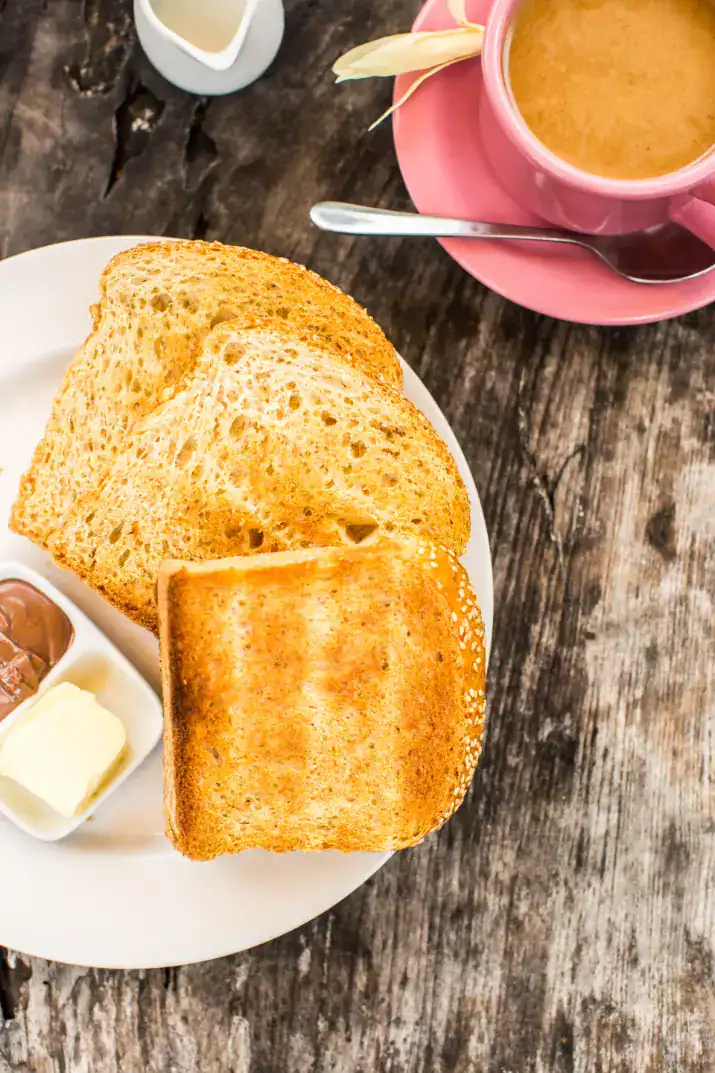
Homemade French Toast
Ingredients
Method
- Whisk together: In a shallow bowl, whisk 2 eggs, 1 cup milk, 1 teaspoon vanilla extract, 1/2 teaspoon cinnamon (optional), and 1/4 teaspoon salt until well combined.
- Prepare the bread: Heat a skillet or griddle over medium heat and add a little butter or oil to coat the surface.
- Dip the bread: Dip each slice of bread into the egg mixture, ensuring both sides are coated but not soggy.
- Cook the dipped bread on the heated skillet for 2-3 minutes per side, or until both sides are golden brown and crispy.
- Serve: Remove from the skillet and serve with syrup or your favorite toppings.
FAQs
What is the best bread for French toast?
The best bread for French toast is thick, egg-rich bread like brioche or challah. These types of bread soak up the batter well, giving you a soft interior and a crisp exterior.
How do I make French toast crispy?
To achieve a crispy French toast, cook it over medium heat, making sure the skillet or griddle is hot before adding the bread. Use enough butter to crisp up the edges, and flip the bread only when golden.
Can I make French toast without eggs?
Yes! You can make French toast without eggs by using a plant-based substitute, such as a flaxseed mixture or silken tofu, along with plant-based milk like almond or oat milk.
What’s the best way to store and reheat leftover French toast?
Store leftover homemade French toast in an airtight container. Reheat it in the toaster for a crispy texture or in the oven at 350°F (175°C) for 5-10 minutes to warm it up without drying it out.
Are there other ways to enhance the flavor of my Homemade French toast?
You can add flavor by mixing in a pinch of cinnamon, nutmeg, or vanilla extract into the batter. For extra sweetness, top your French toast with maple syrup, fresh fruit, or whipped cream.
Conclusion
Making French toast like a pro is simple with the right tips. Start with the best bread, use fresh ingredients, and cook at the right temperature. Don’t forget to add butter for that perfect crisp texture. Experiment with sweet and savory variations to make it your own.
We encourage you to get creative with your French toast! Try adding unique fillings, toppings, or using different types of bread. The possibilities are endless.
We’d love to hear about your French toast creations! Let’s inspire each other with new ideas and flavors. Comment bellow, we hear you!
By following these easy steps and tips, you’ll be making French toast that’s perfectly crispy and delicious every time!
For more breakfast options, try our:

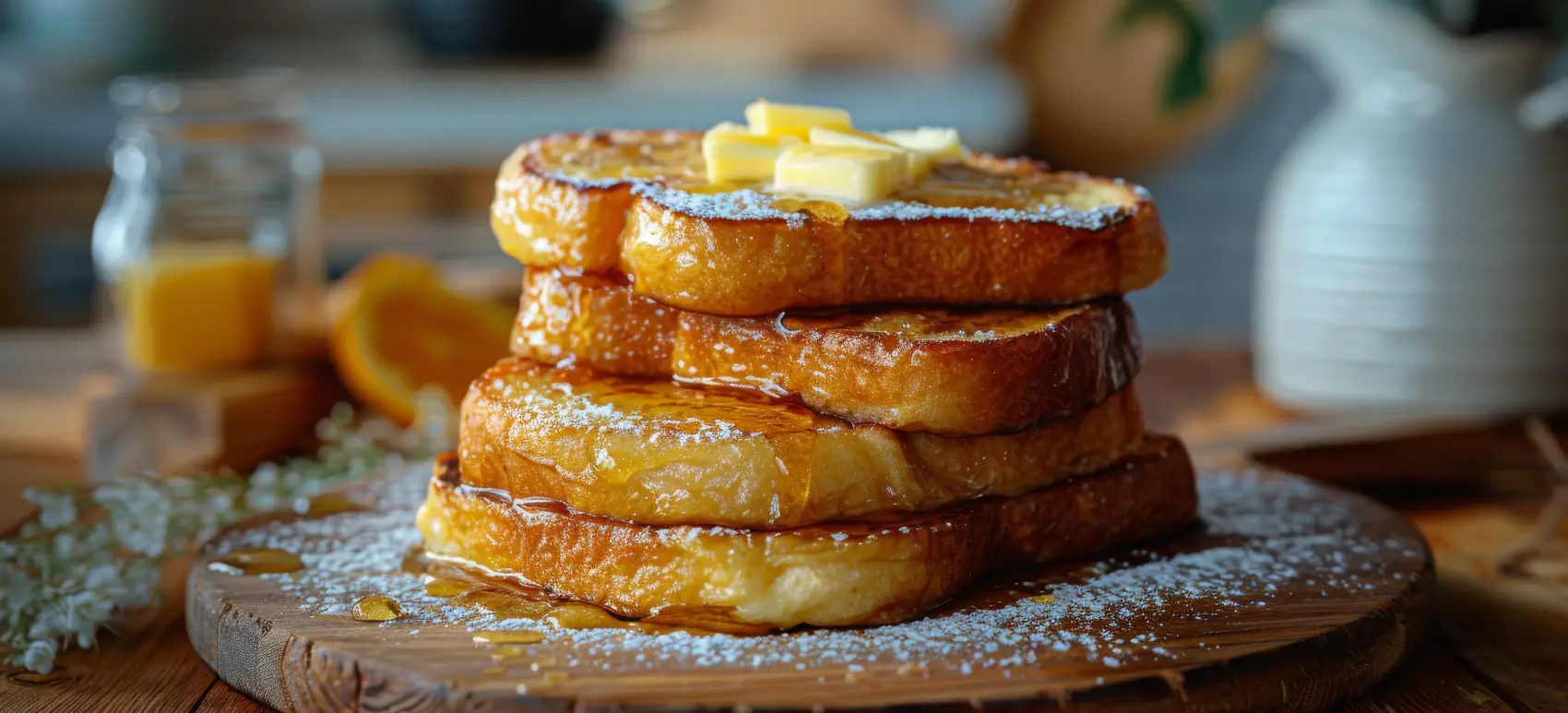
5 thoughts on “How to Make Homemade French Toast Like a Pro: Easy Recipe & Tips”